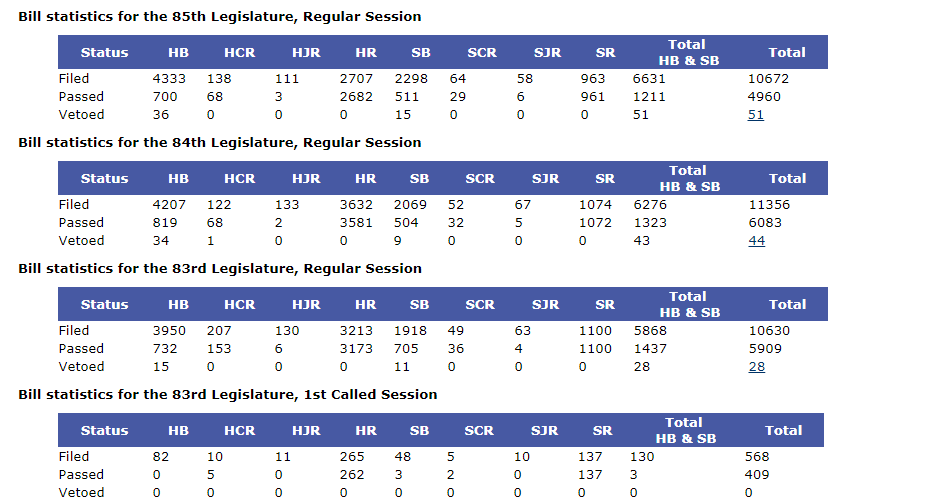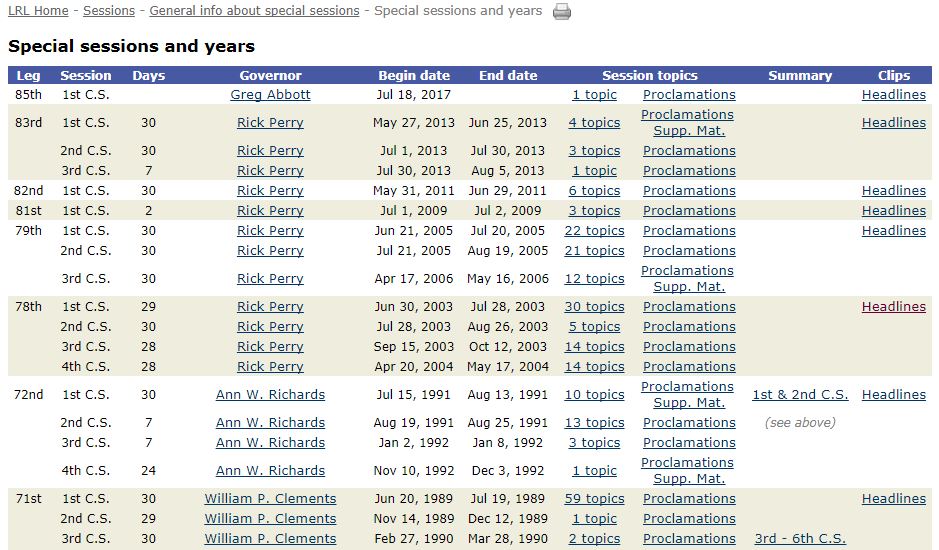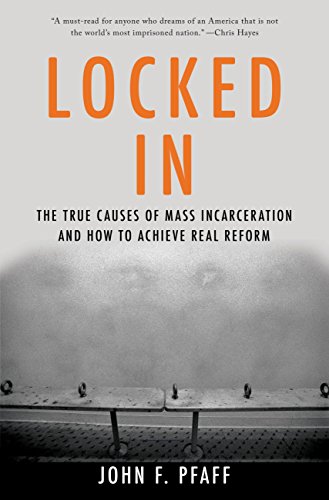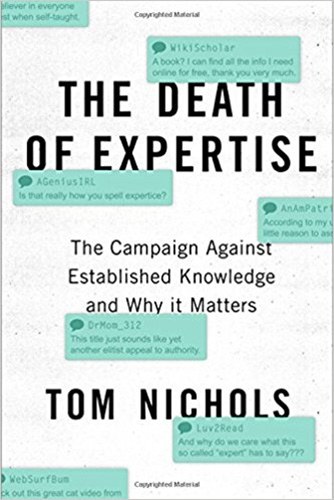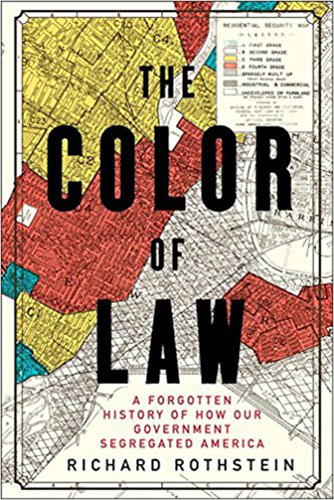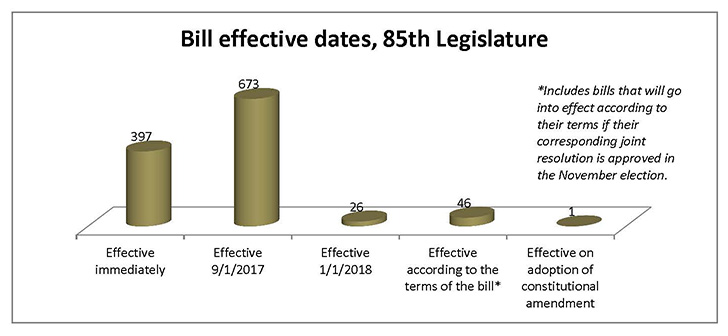Looking for detailed information on special session? The LRL website's section on
Special Sessions and Years includes links to official proclamations and session topics assigned by the Governor for the current special session and select historical special sessions. If you are accessing this page from within the Capitol Complex, you can also view articles from our clippings database concerning special session.
Furthermore, you can stay up-to-date on laws and rules governing special session by visiting the
Statutory Authority Pertaining to Special Sessions section. This page has annotated links to articles in the Texas Constitution and Texas Statutes.
Other available resources include links to relevant Attorney General opinions, House and Senate rules, and answers to frequently asked questions.
This entry was posted on July 18, 2017 at 4:35 PM and has received 1473 views.
Print this entry.

